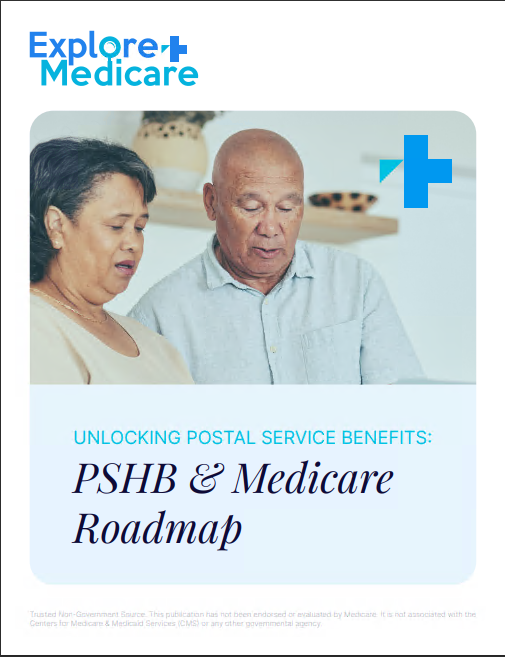Key Takeaways
-
Medicare Part C may offer bundled coverage, but it can leave significant gaps in care or access depending on the plan’s network and rules.
-
Many enrollees discover only after enrolling that their out-of-pocket costs or provider choices are more limited than they expected.
What You Think You’re Getting with Part C
On the surface, Medicare Part C—also called Medicare Advantage—appears to be a streamlined option. These plans are an alternative to Original Medicare (Parts A and B) and are offered by private insurers approved by Medicare. They usually include coverage for hospital and medical services and often toss in prescription drug coverage, vision, dental, or wellness perks.
The appeal is clear: fewer cards to carry, one plan to manage, and sometimes lower monthly premiums compared to combining Original Medicare with a standalone Part D plan and a Medigap policy.
But what seems convenient at the start often comes with fine print, trade-offs, and restrictions that don’t become obvious until you need care.
What You Might Miss Until It’s Too Late
Limited Provider Networks
Many Medicare Advantage plans use Health Maintenance Organization (HMO) or Preferred Provider Organization (PPO) models. This means you’re typically required to:
-
Use doctors and hospitals within the plan’s network
-
Get referrals for specialists
-
Receive prior authorizations for certain procedures or tests
If you travel frequently or split your time between states, finding in-network care can be frustrating or expensive. Unlike Original Medicare, which allows nationwide provider access, Part C restricts your options geographically.
Prior Authorizations and Delays
In 2025, prior authorization continues to be a significant barrier in many Medicare Advantage plans. You may need to wait for plan approval before accessing certain services, treatments, or equipment. These delays can have real consequences for your health, especially in urgent or time-sensitive situations.
Original Medicare rarely requires this level of pre-approval, making it more straightforward for accessing care quickly.
Out-of-Pocket Costs That Add Up
Although Medicare Advantage plans set an annual out-of-pocket maximum, these caps can be high. In 2025, in-network maximums can reach up to $9,350, while combining in-network and out-of-network costs can push that limit to $14,000.
Even routine care can result in:
-
Copayments for primary and specialist visits
-
Charges for diagnostic tests, imaging, and outpatient procedures
-
Costs associated with out-of-network providers
Over time, especially for those with chronic conditions, these costs may exceed what you would have paid under Original Medicare with supplemental coverage.
Prescription Coverage Isn’t Always Predictable
Most Part C plans include Medicare drug coverage (Part D), but they come with their own set of limitations:
-
Each plan has its own formulary (list of covered drugs)
-
Medications can fall into different pricing tiers with varying copays
-
Changes to the formulary can occur annually
In 2025, a major improvement under Part D is the $2,000 annual cap on out-of-pocket costs. While this helps in all Medicare drug plans, some Medicare Advantage plans may still impose rules like step therapy or require prior authorization before approving high-cost drugs.
Supplemental Benefits Aren’t a Guarantee
Plans often advertise extras like dental, vision, hearing aids, or fitness memberships. While these sound like added value, they aren’t standardized. Coverage can vary widely between plans and may come with:
-
Annual caps or limitations
-
Narrow provider networks
-
Reduced service availability in rural areas
In some cases, the benefits look generous on paper but don’t fully cover what you might expect. For example, dental benefits might only include cleanings and exclude major work.
Emergency and Urgent Care Confusion
Medicare Advantage plans are required to cover emergency and urgent care services anywhere in the U.S. However, definitions of what qualifies as an emergency may differ across plans.
Some enrollees run into issues with post-emergency care or follow-up services, which may not be considered urgent or may require network providers, leading to unexpected costs.
Enrollment and Switching Aren’t Always Easy
You can enroll in or switch Medicare Advantage plans during certain periods:
-
Initial Enrollment Period: Around your 65th birthday
-
Annual Enrollment Period: October 15 to December 7 each year
-
Medicare Advantage Open Enrollment Period: January 1 to March 31
Outside these windows, changes are limited unless you qualify for a Special Enrollment Period due to a life event (e.g., moving, losing employer coverage).
Switching from Part C back to Original Medicare can also be tricky. You may not qualify for a Medigap plan without medical underwriting if you do so more than 12 months after first enrolling.
Your Coverage Can Change Every Year
Each fall, Medicare Advantage plans send an Annual Notice of Change (ANOC). This document outlines updates for the coming year, including:
-
Premium changes
-
Adjustments to drug coverage or provider networks
-
New or removed benefits
Even if you’re happy with your current plan, it may not offer the same coverage next year. That’s why reviewing your ANOC each year is critical—and often overlooked.
The Appeal Can Hide Long-Term Limitations
Medicare Advantage plans offer an appealing simplicity—at first. But that convenience can come at the cost of flexibility, predictability, and access. The rules you agree to now may create challenges later, especially if your health changes or your preferred providers are no longer in-network.
Many people choose Medicare Advantage because it seems like a better deal upfront. But those initial savings may disappear if you develop a chronic illness or need specialized care.
Think Beyond the Marketing
Television ads and mailers often highlight low premiums, extra benefits, and ease of use. But they rarely mention the restrictions, high potential costs, or reduced provider choices.
The best way to make an informed decision is by carefully reviewing plan documents, comparing with Original Medicare plus Medigap and Part D, and considering not just your current needs, but what might change in the next 5 to 10 years.
When to Get Help from a Licensed Professional
Choosing between Original Medicare and Part C is one of the most important decisions you’ll make as a Medicare beneficiary. If you’re unsure which option best suits your long-term health, location, and financial outlook, it’s worth having a conversation with someone who can walk you through the trade-offs.
For help evaluating your Medicare options, get in touch with a licensed insurance agent listed on this website. They can provide plan comparisons tailored to your personal situation without cost or obligation.









